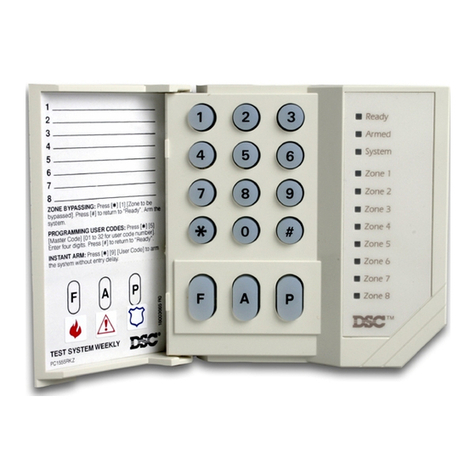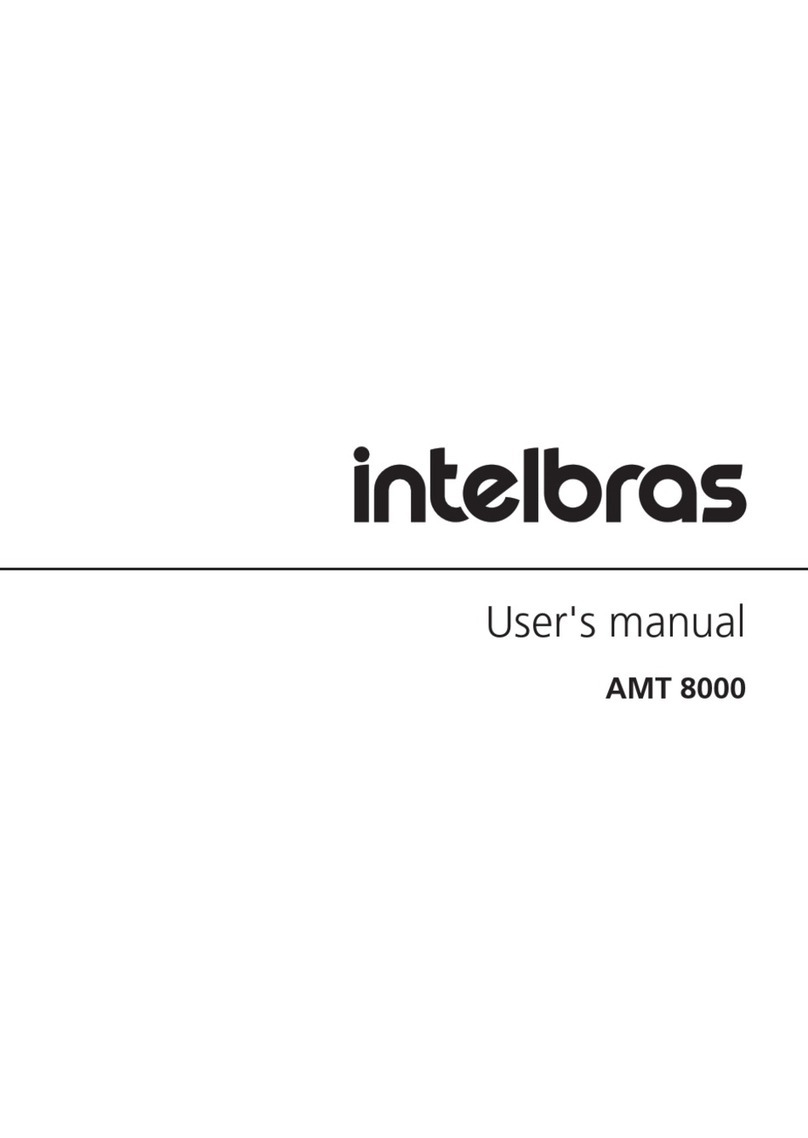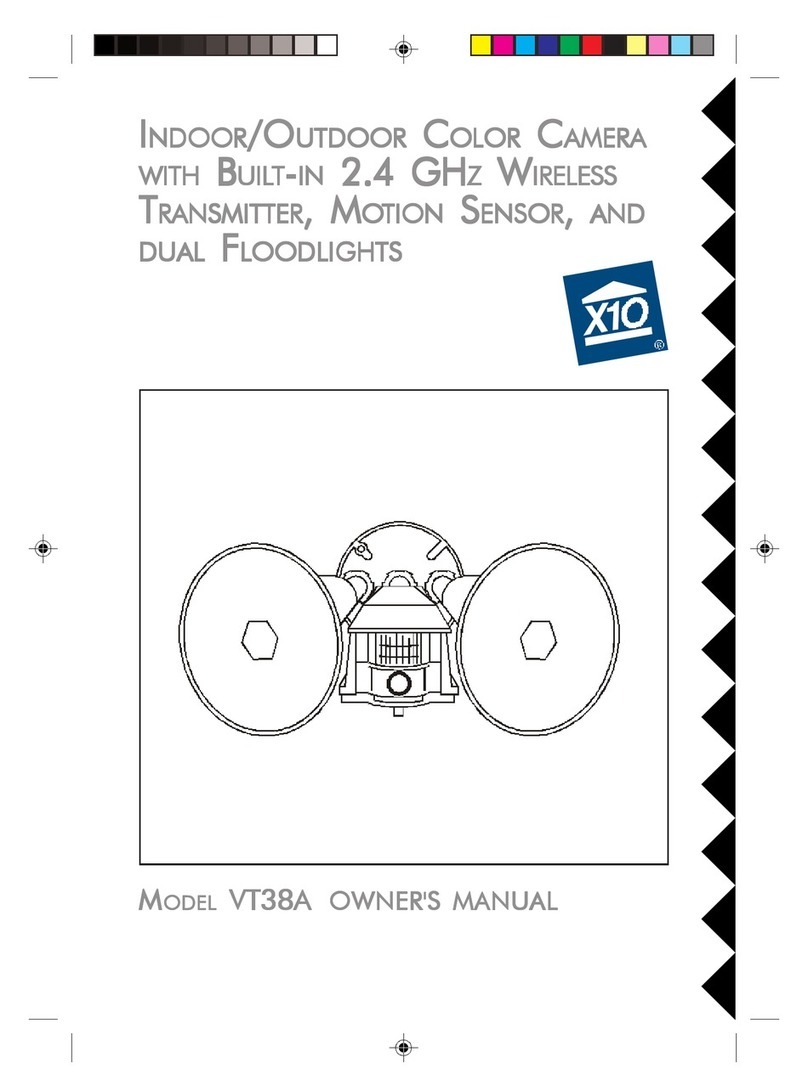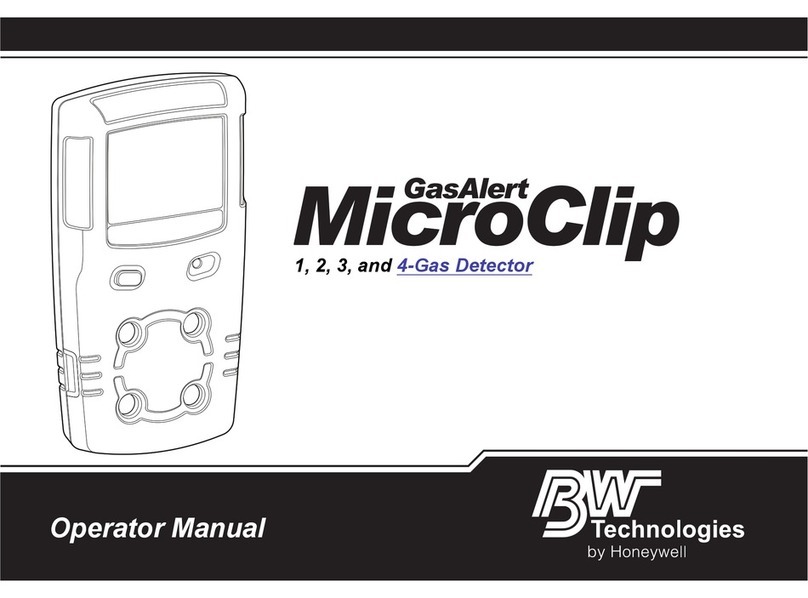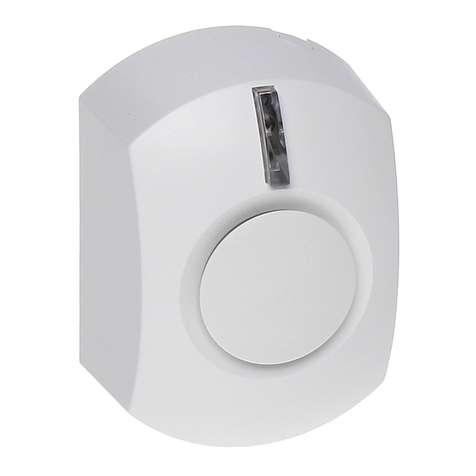Berker EIB Alarm Central Unit Guide

EIB Alarm Central Unit, surface-
mounted
75730010
Technical
Documentation
© Gebr.Berker 2005 Version: 18.08.2005 Page: 1 / 81
(Subject to prior change) 75730010.doc Part 9
Product name: EIB Alarm Central Unit
Design: Surface-mounted
Item no.: 75730010
ETS search path: Berker / Alarm technology / Alarm central unit
Functional description:
This EIB alarm central unit (ACU) is the heart of
an efficient alarm system. Owing to the utilization
of the Instabus EIB, expensive additional cabling
work can be reduced to a minimum. Both the EIB
system and individual detectors installed can, for
example, also be used by other trades.
By many different parameterization options
within an ETS plug-in of its own, the EIB alarm
central unit facilitates its use in various kinds of
buildings – from the detached family house with
outer shell and interior room safeguarding up to
the office building where up to four safeguarding
areas (SA 1…4) can be protected individually or
as groups linked up with one another. The ETS
plug-in will be automatically started when the
parameter setting option is called.
The EIB alarm central unit stands out for the following performance features:
•Up to 160 detectors can be managed and integrated into up to four separate safeguarding areas.
•All sensors (detectors) are connected to the alarm central unit via the EIB. This facilitates individual identification
and monitoring of all detectors.
•All events (arming, alarm, fault) will be logged together with their date and time and saved.
•The alarm indicators (siren, flashlight, alarm transmission device (ATD)) can be directly connected to the alarm
central unit or triggered via the EIB.
•A rechargeable emergency battery facilitates uninterrupted operation of the alarm indicators even in the event of
mains failure. An intelligent electronic charging circuit ensures that emergency power supply of at least 12 hours
will always be guaranteed.
•Display and operation are exclusively decentralized and can be handled via external EIB devices (info display unit,
pushbutton sensors, etc.). Sometimes, several types of arming devices (AD) can be used within an arming area
(AA 1…AA 4) for arming and disarming.
•A local detector input (wired detector) can be used for safeguarding the place of installation of the alarm central
unit, e. g. in a distribution cabinet. Thus, the alarm central unit will be in a position to protect 'itself'.
•An additional relay contact in the form of a potential-free output can, for example, be used for additional alarm
indicator applications.
For fire and attack detectors, separate safeguarding areas are reserved. If a detector from one of such safeguarding
areas responds an alarm will immediately be raised, regardless of the state of the system.
As a special variant, the alarm central unit can also be solely used for attack and fire detector applications.
A detector test mode is available, by means of which all detectors of the alarm system can be checked without rais-
ing any alarm.
Particularly large buildings (arcades, extensive factory units) can possibly not be safeguarded by one alarm central
unit alone but require several alarm central units, each of them monitoring partial complexes. When several EIB
alarm central units are used, such alarm central units can monitor one another by sending and receiving telegrams
for mutual monitoring. After three missing telegrams from the 'partner alarm central unit', a sabotage signal will be
released (armed: alarm, disarmed: fault).

EIB Alarm Central Unit, surface-
mounted
75730010
Technical
Documentation
© Gebr.Berker 2005 Version: 18.08.2005 Page: 2 / 81
(Subject to prior change) 75730010.doc Part 9
Illustration:
F4
F3
F2
F1
Melder
Sabo
R-Sabo
GND
ÜG (-)
12V / 0,1A
ÜG-R
ÜG-S/U
ÜG-E
ÜG-F
ÜG-Ü
ÜG-S
GND
12V / 0,1A
Blitz (-)
ASIR (-)
ISIR (-)
12V (+)
12V (+)
12V (+)
J1
GND
X2 X3
LP1
Betrieb
LED Prog
Sabo
AC230V
X10
5
1
32
8
4
8
6
J2
9
F5
7
LP2
-
-
+
Dimensions:
Width: 210 mm
Height: 270 mm
Depth: 73 mm
Controls:
1 Programming key and programming LED.
2 EIB connection.
3 Sabotage contact (cover contact).
4 9 red LEDs to indicate the output states: alarm transmission device (ÜG = ATD), outdoor siren (Asir), indoor siren
(Isir), flashlight and potential-free relay contact (LED lit = output active).
5 Mains voltage fuse (F4 = 3.15 A, slow-blow).
6 Actuator output fuses (F1
BCU sec. part
= 100 mA, slow-blow/F2
add. +12 V supply
= 100 mA, slow-blow/
F3
transm. unit
= 100 mA, slow-blow).
7 "Reverse battery protection" fuse (F5 = 3.15 A, fast-blow).
8 Jumper J1, "bus voltage failure in the armed state", "Betrieb" (device ON) LED.
The green LED indicates the status of the bus voltage. If it is blinking the bus voltage has failed or the device is
being programmed. In this case, the response of the alarm central unit can be set with jumper J1 (refer to "Re-
sponse to Bus Failure").
9 Although jumper J2 has no function, it must be inserted (its position is irrelevant).

EIB Alarm Central Unit, surface-
mounted
75730010
Technical
Documentation
© Gebr.Berker 2005 Version: 18.08.2005 Page: 3 / 81
(Subject to prior change) 75730010.doc Part 9
Specifications
Protective system: IP 20
Mark of conformity: EIB
Ambient temperature: -5 °C to +45 °C
Storage temperature: -25 °C to +75 °C (storage above +45 °C will shorten the life)
Fitting position: any
Minimum distances: none
Type of fixing: rigid/wall mounting
instabus EIB supply
Voltage: 21 - 32 VDC
Power consumption: 240 mW typ.
Connection: instabus connecting and branch terminal
External supply
Voltage: 230 VAC +/- 10 %, 50/60 Hz
Power consumption: 24 W max.
Connection: Screw terminals:4 mm² max. single-wire
2.5 mm² max. finely stranded without ferrule
1.5 mm² max. finely stranded with ferrule
Response to voltage failure
You can use jumper J1 to set the response to bus voltage failure while
the system is in its armed state.
J1J1
1 2
Position 1 The "flashlight" (Blitz) and "outdoor siren" (Asir,
180 s) wired outputs as well as the "fault signal to
the ATD" (ÜG-S) and "intruder signal to the ATD"
(ÜG-E) outputs will be triggered immediately.
Position 2 Only the wired "fault signal to the ATD" (ÜG-S)
output will be triggered immediately.
Bus voltage only:
When the system is in its disarmed state, only a fault signal (fault signal
to the ATD) will be released through the wired output after 60 seconds.
Mains voltage only: When the system is in its armed state and the mains has failed for at
least 30 seconds, an alarm transmission device fault signal will be re-
leased. If the mains failure is shorter than 30 seconds such failure will
only be recorded in the event log.
For a disarmed system and a mains failure of at least 30 seconds, an
alarm central unit fault signal will be released, with this event being indi-
cated by the display units. If the mains failure is shorter than 30 seconds
such failure will only be recorded in the event log.
A fault signal caused by a mains failure of < 60 minutes can be tempo-
rarily reset by acknowledgement (disarming) in the individual arming
areas (refer to "5.3 Fault acknowledgement operations", page 48).
A mains voltage failure of > 60 minutes, however, can only be reset
after mains voltage recovery.
In the event of a mains voltage failure, the emergency battery will feed
the alarm system including all alarm indicators up to 12 hours.

EIB Alarm Central Unit, surface-
mounted
75730010
Technical
Documentation
© Gebr.Berker 2005 Version: 18.08.2005 Page: 4 / 81
(Subject to prior change) 75730010.doc Part 9
Bus and mains voltages: The response to bus voltage failure can be set with jumper J1 while the
system is in its armed state (refer to "Response to Bus Failure"). In any
case, an alarm transmission device fault signal will be immediately
released. The mains failure will be written into the event log.
When the system is in its disarmed state, only a fault signal (fault signal
to the ATD) will be released after 60 seconds. In addition, the mains
voltage failure (> 30 seconds) will raise an alarm system fault signal if
the bus voltage has reappeared at this time. The mains failure will be
written into the event log.
In the event of a mains voltage failure, the emergency battery will feed
the alarm system including all alarm indicators up to 12 hours.
Response to recovery
Bus voltage only: Depending on the software (refer to "11.2 Bus voltage recovery",
page 58).
The "bus voltage recovery" parameter determines whether the state of
the alarm central unit before the bus voltage failure ("last state") should
be restored, or whether all arming areas should be disarmed ("all AAs
disarmed").
After each bus voltage recovery, all detectors will be checked for their
presence. Any missing detectors of armed areas will, in this case, lead
to alarm raising. Missing detectors of disarmed areas will release an
alarm central unit fault signal (through the "alarm central unit fault" ob-
ject).
Bus voltage recovery will be stored in the event log.
Mains voltage only: The time at which the mains voltage recovers determines the response
(refer to "Response to Mains Voltage Failure").
Bus and mains voltages: Depending on the software (refer to "11.2 Bus voltage recovery",
page 58).
If the bus and mains voltages recover at the same time there will be no
response to the mains voltage failure.
If there is no mains voltage upon bus voltage recovery an alarm central
unit fault signal (mains failure > 30 seconds) will be released.
Bus voltage recovery will be stored in the event log.
Wired detector input:
Number: 1
Signal voltage: approx. +4.7 VDC (in open state/"1" signal)
0 V (when contact is closed/"0" signal)
Signal current: 500 µA typ. (when contact is closed)
Detector resistance: max. 1 kOhm max. for "0" signal recognition
Signal period: 100 ms min.
Input line length: 200 m max. for a min. wire diameter of 0.8 mm
Connection: Screw terminals: 1.5 mm² max., single-wire
1.0 mm² max., fiinely stranded without ferrule
0.75 mm² max., finely stranded with ferrule
Sabotage input:
Number: 1
Signal voltage: approx. +4.7 VDC (in open state)
0 V (for a sabotage resistance of 0 Ohms)
approx. +2.8 VDC (for a sabotage resistance of 12 kOhms)
approx. +3.8 VDC (for a sabotage resistance of 47 kOhms)
Signal current: approx. 500 µA (for a sabotage resistance of 0 Ohms)
approx. 200 µA (for a sabotage resistance of 12 kOhms)
approx. 80 µA (for a sabotage resistance of 47 kOhms)
Signal period: 100 ms min.
Input line length: 600 m max. for a min. wire diameter of 0.8 mm
Connection: Screw terminals: 1.5 mm² max., single-wire
1.0 mm² max., finely stranded without ferrule
0.75 mm² max., finely stranded with ferrule

EIB Alarm Central Unit, surface-
mounted
75730010
Technical
Documentation
© Gebr.Berker 2005 Version: 18.08.2005 Page: 5 / 81
(Subject to prior change) 75730010.doc Part 9
ATD checkback input (ÜG-R):
Number: 1
Signal voltage: +5 VDC max. external SELV
Signal current: 500 µA max.
Signal recognition:
"1" signal (no fault): ≥+2 VDC
"0" signal (fault): 0 ... +0.8 VDC
Signal period: 100 ms min.
Input line length: 200 m max. for a min. wire diameter of 0.6 mm
Connection: Screw terminals: 1.5 mm² max., single-wire
1.0 mm² max., finely stranded without ferrule
0.75 mm² max., finely stranded with ferrule
Alarm indicator outputs:
Number: 3 (1 x outdoor siren/1 x indoor siren/1 x flashlight)
Switch type: power MOS-FET, depending on output
Rated voltage: + 2 VDC SELV per output (+/- 1.5 V in emergency power supply mode)
Rated current: 1.6 A max. (all 3 outputs together) The outputs are electronically pro-
tected against overloading.
Output line length: 100 m max. for a min. wire diameter of 0.8 mm
Connection: Screw terminals: 1.5 mm² max., single-wire
1.0 mm² max., finely stranded without ferrule
0.75 mm² max., finely stranded with ferrule
ATD output:
ATD supply:
Number: 1 x +12 VDC/1 x GND ÜG (-)
Rated voltage: +12 VDC SELV (+/- 1.5 V in emergency power supply mode)
Rated current: 100 mA max.
Control outputs:
Number: 5 (1 x ÜG-S/U/1 x ÜG-E/1 x ÜG-F/1 x ÜG-Ü/1 x ÜG-S)
Switch type: transistor per control output (outputs to switch ground)
Rated voltage: +12 VDC SELV (+/- 1.5 V in emergency power supply mode) with re-
spect to "12 V/0.1 A" terminal
Rated current: 10 mA max. per control output
Output line length: 200 m max. for a min. wire diameter of 0.6 mm
Connection: Screw terminals: 1.5 mm² max., single-wire
1.0 mm² max., finely stranded without ferrule
0.75 mm² max., finely stranded with ferrule
Potential-free relay output:
Number: 1 x normally open (NO)/1 x normally closed (NC) with the same base
contact
Switch type: potential-free relay contacts
Switching voltage: 12 VAC/DC max.
Switching current: 5 A max.
Minimum load: 30 mA
Connection: Screw terminals: 1.5 mm² max., single-wire
1.0 mm² max., finely stranded without ferrule
0.75 mm² max., finely stranded with ferrule
+12 VDC supply additional output:
Number: 1 x +12 VDC/2 x GND
Rated voltage: +12 VDC SELV (+/- 1.5 V in emergency power supply mode)
Rated current: 100 mA max.
Connection: Screw terminals: 1.5 mm² max., single-wire
1.0 mm² max., finely stranded without ferrule
0.75 mm² max., finely stranded with ferrule
Storage battery:
Type: lead gel storage battery
Rated voltage: +12 VDC
Capacity: 1.2 Ah
Charging voltage: +13.4 VDC
Charging current: 150 mA max.
Internal clock
Power reserve: 12 hours min.
Time error: < 2 minutes per month

EIB Alarm Central Unit, surface-
mounted
75730010
Technical
Documentation
© Gebr.Berker 2005 Version: 18.08.2005 Page: 6 / 81
(Subject to prior change) 75730010.doc Part 9
Wiring diagram: Terminal assign-
ment:
Alarm indicators
Alarm indicators can be directly connected to the EIB alarm central unit - terminal strip X3.
As an alternative, you can connect alarm indicators to the EIB via suitable actuators and trig-
ger them by telegrams (refer to 'Object description').
Integrate the sabotage contacts of the alarm indicators into the sabotage circuit (refer to
'Sabotage security').
the red LEDs opposite to the terminals indicate when an output is being triggered (output
being triggered = LED is lit).
GND
12V / 0,1A
Blitz (-)
ASIR (-)
ISIR (-)
12V (+)
12V (+)
12V (+)
GND
X3
Terminal Function
Relay Potential change-over contact facilitating the switching of a load.
Switching capacity: 12 VAC/DC, 6 A, max.
12V/0.1A/GND +12 V connection for the supply of external alarm components
(e. g. to be switched via the relay). Max. load 100 mA (1.2 W).
12 V (+)/Blitz (-) For the connection of a flashlight. Can be activated in the event of
alarm without any time limit until disarming takes place (depending on
parameter).
12 V (+)/ASIR (-) For the connection of an outdoor siren. In the event of alarm, it may be
on for a max. period of 180 s (triggering period depending on parame-
ter).
12 V (+)/ISIR (-) For the connection of an indoor siren. In the event of alarm, it should
be on for a max. period of 180 s (triggering period depending on pa-
rameter).

EIB Alarm Central Unit, surface-
mounted
75730010
Technical
Documentation
© Gebr.Berker 2005
Version: 18.08.2005
Page: 7 / 81
(Subject to prior change)
75730010.doc
Part 9
Wiring diagram: Terminal as-
signment:
Wired detector
The alarm detectors can be connected to the instabus EIB, if necessary, via suitable binary
inputs. An additional detector - or even several normallyclosed contacts connected in series (closed
current loop) - can be directlyconnected to the alarm central unit.
This detector contact must be connected between the "Melder" (detector) and "GND" terminal
(where "GND" may be any terminal of the alarm central unit marked this way). Such detector
can, for example, be used for safeguarding the area in which the alarm central unit is located.
The wired detector must be assigned to one of the four safeguarding areas when the system is
being configured from the ETS. Assignment to the "fire" or "attack" area will not be possible. For
this reason, the wired detector input is deactivated in configuration 1.
The alarm central unit comes with a wire jumper inserted between the "Melder" (detector) and
"GND" terminals. If you use the detector input remove this wire jumper.
The state of the contact can be transmitted to the bus: ontact closed = "0"/
contact open = "1".
Melder
GND
X2

EIB Alarm Central Unit, surface-
mounted
75730010
Technical
Documentation
© Gebr.Berker 2005
Version: 18.08.2005
Page: 8 / 81
(Subject to prior change)
75730010.doc
Part 9
Wiring diagram: Terminal assign-
ment:
Alarm transmission device
Alarm transmission devices (ATDs) transmit signals of the alarm central unit through the tele-
phone line, for example, to a property security company or a private person.
One alarm transmission device can be connected to terminal strip X2. In this connection, the
individual terminals will be triggered separately.
For visual indication, the related LEDs will be lit, if their associated terminals are being trig-
gered.
As an alternative or additionally, an EIB alarm transmission device can be triggered through
the object provided for this purpose (refer to 'Object description').
ÜG (-)
12V / 0,1A
ÜG-R
ÜG-S/U
ÜG-E
ÜG-F
ÜG-Ü
ÜG-S
X2
Terminal Function
ÜG (-)
12V/0,1A 12 VDC supply voltage (+ and -) for alarm transmission devices without their
own power supply. The maximum load to be imposed is 100 mA.
ÜG-R Checkback input from the ATD (in the event of alarm transmission device
fault/local alarm/negative acknowledgement).
("1" signal = no fault/"0" signal = fault) *
ÜG-S/U Armed/disarmed state signal to the ATD. *
ÜG-E Intruder signal to the ATD (the detector of anarmed area has tripped). *
ÜG-F FiresignaltotheATD(asmokedetectorhastripped). *
ÜG-Ü Attack signal to the ATD (an attack detector has tripped). *
ÜG-S Fault signal to the ATD (e. g. battery fault). *
*: For the direct connection of an alarm transmission device having its own power supply (the
alarm transmission device is not supplied by the alarm central unit) connect the ground po-
tential of the alarm transmission device and of the alarm central unit (terminal: "ÜG (-)") with
each other to ensure proper functioning of the inputs or of the outputs, respectively. Observe
the instructions given in the documentation of the alarm transmission device used.
The terminal (ÜG-R) or the "ATD checkback contact fault" object (191) will be triggered by the
alarm transmission device if there is a fault in the telephone network (no exchange connection) or
a call could not be transmitted ("busy line"). In the event of a "silent" attack alarm (alarming only
through the alarm transmission device) a (parameterizable) local alarm (siren and flashlight) can
be triggered after an unsuccessful alarm signal.

EIB Alarm Central Unit, surface-
mounted
75730010
Technical
Documentation
© Gebr.Berker 2005
Version: 18.08.2005
Page: 9 / 81
(Subject to prior change)
75730010.doc
Part 9
Wiring diagram: Terminal as-
signment:
Sabotage security ("alarm central unit wired detector sabotage")
Between the "Sabo" (sabotage) and "GND" terminals of terminal strip X2, you can connect the
sabotage contacts of the wired alarm indicators (siren and flashlight) or of the wired arming
devices (e. g. key-operated switches).
In this connection, and by the optional integration of a terminating resistor into the sabotage
circuit (closed current loop), it will be possible not only to recognize an interruption in the circuit
but, on the contrary, also to detect any short circuit or other manipulations which change the
resistance of the circuit.
You can determine the resistance of the sabotage circuit when using the ETS to configure the
system. You can set the following resistances: 0
Ω
, 12 k
Ω
, 47 k
Ω
.
If you need a resistance which you cannot configure you can use the "R-Sabo" terminal for
adaptation.
2k 10k
GND
X2
Sabo
R-Sabo
Example:
You have configured 12 k
Ω
. The device has a firmly integrated resistor of 10 k
Ω
at its
sabotage terminal. In this case, connect a 2 k
Ω
compensating resistor between "Sabo" and "R-
Sabo" (potential-free contact) to obtain a total resistance of 12 k
Ω
.
The alarm central unit comes with a sabotage terminating resistance set to 0
Ω
. If you use the
sabotage input remove the wire jumper from between the "Sabo" and "GND" terminals.
Tampering with the wired sabotage circuit within armed areas will lead to sabotage alarm.
In disarmed areas, a 'global' fault signal will be released. You must separately acknowledge
such signal in each arming area.
The enclosure of the alarm central unit is monitored by a microswitch. Opening the enclosure in
the "disarmed" state will cause a fault signal ("alarm central unit enclosure sabotage"). If any
area has been armed sabotage alarm will also be raised there.
The sabotage contacts of the devices within the safeguarded inner area and the external arming
devices (e. g. key-operated switches) should be integrated into the system as sabotage detectors
via the EIB (refer to "3. Detector and Sabotage Inputs", page 26). This facilitates the immediate
identification of the tripped detector contact when a sabotage alarm is released.
If external ariming devices raise sabotage alarm you can no longer use it for disarming.
GND
X2
Sabo
R-Sabo

EIB Alarm Central Unit, surface-
mounted
75730010
Technical
Documentation
© Gebr.Berker 2005
Version: 18.08.2005
Page: 10 / 81
(Subject to prior change)
75730010.doc
Part 9
Remarks on the hardware
•
The maximum current of all devices connected to the alarm central unit must not exceed 1.8 A.
•
The alarm central unit has an overload or short-circuit detection circuit for the alarm indicator outputs. In case of
overload of an output, the electronic overload detection circuit will switch off all alarm indicator outputs (terminals:
Blitz (flashlight), Asir (outdoor siren), Isir (indoor siren) for about 1 second. In a subsequent test cycle, the alarm
central unit will identify the overloaded or short-circuited alarm indicators by priority-related adding of the outputs
(flashlight
outdoor siren
indoor siren) and will deactivate them permanently. If none of the outputs can be
clearly found overloaded during the test cycle there may possibly be some sum overload. In such case, the auto-
matic circuit will deactivate individual outputs by priority until no more overload is detected.
Deactivated outputs will only be enabled again when the bus voltage is applied and the alarm indicator outputs are
switched off by the alarm central unit in the 'usual' way, for example, after an alarm period has elapsed. If any out-
puts are overloaded again when the alarm indicators are switched on for the next time such outputs will be deacti-
vated again.
Overloaded outputs will cause an "alarm indicator overload" global alarm central unit fault.
•
The alarm central unit needs 230 VAC mains voltage for permanent operation. The line fuse protection of the EIB
alarm central unit should be implemented by a safety cut-out which has not been integrated in the residual current
circuit breaker system of your general interior wiring.
•
When programming the physical address (actuating the programming key), you should disconnect the device from
the 230 V mains to ensure protection against accidental contact.
•
Maximum protection against sabotage will be guaranteed if all wiring to the alarm central unit is installed in con-
cealed fashion. Through the installation opening at the rear side of the enclosure, you can lead the wiring into the
alarm central unit.
•
You can use the free wires of the EIB cable (yellow and white) to supply external components of the alarm system
(e. g. buzzer/LED of the key-operated switch, block connecting link, blocking element, etc.).
For the power supply of such external components, you can use the alarm central unit (terminal strip X3, "12V/0.1A"
and "GND") as source.
Note: Follow the EIB installation rules for the second wire pair. Do not use these EIB wires for any other application.
Observe the conditions for the installation of SELV.
•
The battery life is approx. 5 years at an ambient temperature of 20 °C. Exposing the battery to highe r temperatures
or completely discharging it several times will extremely shorten its life.
It is recommended to replace the emergency battery in intervals of some 4 years.
If the battery voltage drops below 11.0 V (ageing effects or battery defect) a fault will be indicated, and you must
replace the battery (refer to "12. Battery Management", page 58).
•
The bus voltage and all detectors connected to the EIB will not be supplied by the emergency battery. Also to guar-
antee uninterrupted operation in that case you should use an EIB emergency power supply system.

EIB Alarm Central Unit, surface-
mounted
75730010
Technical
Documentation
© Gebr.Berker 2005
Version: 18.08.2005
Page: 11 / 81
(Subject to prior change)
75730010.doc
Part 9
Software Description
ETS search path:
Berker / Alarm technology / Alarm central unit
ETS symbol:
n
PEI type
11
Hex
17
Dec
Programmable I/O
Applications:
No.
Brief description:
Name:
Version:
1 Alarm central unit Alarm central unit C00402 0.2
Application:
1. Alarm central unit C00402
Runable from screen form version: 7.1
Number of addresses (max.): 254 Dynamic table management Yes No
Number of assignments (max.): 254 Maximum table length 508
Communication objects: 231
Detector objects:
2)
Object
Function
Name
Type
Flag
0 – 159 Safeguarding area 1 Inputs 1 – 160 1-bit C, W, T, A, (R)
1)
0 – 159 Safeguarding area 2 Inputs 1 – 160 1-bit C, W, T, A, (R)
1)
0 – 159 Safeguarding area 3 Inputs 1 – 160 1-bit C, W, T, A, (R)
1)
0 – 159 Safeguarding area 4 Inputs 1 – 160 1-bit C, W, T, A, (R)
1)
0 – 159 Fire Inputs 1 – 160 1-bit C, W, T, A, (R)
1)
0 – 159 Attack Inputs 1 – 160 1-bit C, W, T, A, (R)
1)
Sabotage object:
Object
Function
Name
Type
Flag
160 Sabotage Wired sabotage input 1-bit C, T, (R)
1)
Wired detector contact:
3)
Object
Function
Name
Type
Flag
161 Safeguarding areas 1 – 4 Wired detector input 1-bit C, T, (R)
1)
Arming objects:
4)
Object
Function
Name
Type
Flag
162 Arming area 1 Arming input 1-bit C, W, (R)
1)
163 Arming area 2 Arming input 1-bit C, W, (R)
1)
164 Arming area 3 Arming input 1-bit C, W, (R)
1)
165 Arming area 4 Arming input 1-bit C, W, (R)
1)
166 Arming area 1 Arming input 1-bit C, W, (R)
1)
167 Arming area 2 Arming input 1-bit C, W, (R)
1)
168 Arming area 3 Ready for arming 1-bit C, W, (R)
1)
169 Arming area 4 Ready for arming 1-bit C, W, (R)
1)
213 All safeguarding areas Alarm reset 1-bit C, W, (R)
1)
214 All safeguarding areas Detector test 1-bit C, W, (R)
1)
Armed/disarmed state signalization objects:
4)
Object
Function
Name
Type
Flag
170 Arming area 1 Static armed state signal 1-bit C, T, (R)
1)
171 Arming area 2 Static armed state signal 1-bit C, T, (R)
1)
172 Arming area 3 Static armed state signal 1-bit C, T, (R)
1)
173 Arming area 4 Static armed state signal 1-bit C, T, (R)
1)

EIB Alarm Central Unit, surface-
mounted
75730010
Technical
Documentation
© Gebr.Berker 2005
Version: 18.08.2005
Page: 12 / 81
(Subject to prior change)
75730010.doc
Part 9
Armed/disarmed state signalization objects (continued):
4)
Object
Function
Name
Type
Flag
174 Arming area 1 Static disarmed state signal 1-bit C, T, (R)
1)
175 Arming area 2 Static disarmed state signal 1-bit C, T, (R)
1)
176 Arming area 3 Static disarmed state signal 1-bit C, T, (R)
1)
177 Arming area 4 Static disarmed state signal 1-bit C, T, (R)
1)
178 Arming area 1 Armed state signal pulse 1-bit C, T, (R)
1)
179 Arming area 2 Armed state signal pulse 1-bit C, T, (R)
1)
180 Arming area 3 Armed state signal pulse 1-bit C, T, (R)
1)
181 Arming area 4 Armed state signal pulse 1-bit C, T, (R)
1)
182 Arming area 1 Disarmed state signal pulse 1-bit C, T, (R)
1)
183 Arming area 2 Disarmed state signal pulse 1-bit C, T, (R)
1)
184 Arming area 3 Disarmed state signal pulse 1-bit C, T, (R)
1)
185 Arming area 4 Disarmed state signal pulse 1-bit C, T, (R)
1)
186 Arming area 1 Pre-alarm 1-bit C, T, (R)
1)
187 Arming area 2 Pre-alarm 1-bit C, T, (R)
1)
188 Arming area 3 Pre-alarm 1-bit C, T, (R)
1)
189 Arming area 4 Pre-alarm 1-bit C, T, (R)
1)
194 Arming area 1 Disarmed after alarm 1-bit C, T, (R)
1)
195 Arming area 2 Disarmed after alarm 1-bit C, T, (R)
1)
196 Arming area 3 Disarmed after alarm 1-bit C, T, (R)
1)
197 Arming area 4 Disarmed after alarm 1-bit C, T, (R)
1)
Alarming objects - safeguarding areas:
4)
Object
Function
Name
Type
Flag
190 Alarming Safeguarding area 1 alarm 1-bit C, T, (R)
1)
191 Alarming Safeguarding area 2 alarm 1-bit C, T, (R)
1)
192 Alarming Safeguarding area 3 alarm 1-bit C, T, (R)
1)
193 Alarming Safeguarding area 4 alarm 1-bit C, T, (R)
1)
201 Alarming Fire alarm 1-bit C, T, (R)
1)
230 Alarming Fire fault 1-bit C, T, (R)
1)
202 Alarming Attack alarm 1-bit C, T, (R)
1)
225 All safeguarding areas Alarm reset 1-bit C, T, (R)
1)
Alarming objects - alarm transmission device:
Object
Function
Name
Type
Flag
198 Alarming Intruder signal to the ATD 1-bit C, T, (R)
1)
199 Alarming Armed/disarmed state signal
to the ATD 1-bit C, T, (R)
1)
200 Alarming Fault signal to the ATD 1-bit C, T, (R)
1)
Alarming objects - alarm indicators:
Object
Function
Name
Type
Flag
204 Alarming Flashlight 1-bit C, W, T, (R)
1)
205 Alarming Outdoor siren 1-bit C, W, T, (R)
1)
206 Alarming Indoor siren 1-bit C, W, T, (R)
1)

EIB Alarm Central Unit, surface-
mounted
75730010
Technical
Documentation
© Gebr.Berker 2005
Version: 18.08.2005
Page: 13 / 81
(Subject to prior change)
75730010.doc
Part 9
System monitoring objects:
Object
Function
Name
Type
Flag
203 System monitoring ATD checkback input fault 1-bit C, W, (R)
1)
226 All safeguarding areas Detector test 1-bit C, W, (R)
1)
227 Heartbeat check
5)
Heartbeat check input 1-bit C, W, (R)
1)
228 Heartbeat check
5)
Heartbeat check output 1-bit C, T, (R)
1)
229 System monitoring Alarm central unit fault 1-bit C, T, (R)
1)
Display control objects:
6)
Object
Function
Name
Type
Flag
207 Info display unit 1 Line 1 14-byte C, T, (R)
1)
208 Info display unit 1 Line 2 14-byte C, T, (R)
1)
209 Info display unit 1 Line 3 14-byte C, T, (R)
1)
210 Info display unit 2 Line 1 14-byte C, T, (R)
1)
211 Info display unit 2 Line 2 14-byte C, T, (R)
1)
212 Info display unit 2 Line 3 14-byte C, T, (R)
1)
213 Info display unit 3 Line 1 14-byte C, T, (R)
1)
214 Info display unit 3 Line 2 14-byte C, T, (R)
1)
215 Info display unit 3 Line 3 14-byte C, T, (R)
1)
216 Info display unit 4 Line 1 14-byte C, T, (R)
1)
217 Info display unit 4 Line 2 14-byte C, T, (R)
1)
218 Info display unit 4 Line 3 14-byte C, T, (R)
1)
219 Info display unit 1 Selection 1-bit C, W, (R)
1)
220 Info display unit 2 Selection 1-bit C, W, (R)
1)
221 Info display unit 3 Selection 1-bit C, W, (R)
1)
222 Info display unit 4 Selection 1-bit C, W, (R)
1)
Date/time control objects:
Object
Function
Name
Type
Flag
223 System clock Time 3-byte C, W, (R)
1)
224 System clock Date 3-byte C, W, (R)
1)
1)
For the objects selected (L) the current object status can be read out (setting L flag).
2)
The detector objects will be created dynamically in dependence on the parameterized detectors of the individual
safeguarding areas (fire, attack, SA 1 - 4). The names of the communication objects and the object table will
change correspondingly.
3)
The assignment of the "wired detector input" object to one of the four safeguarding areas can be freely param-
eterized in dependence on the configuration.
4)
These objects will be created dynamically in dependence on the parameterized arming areas.
5)
The "heartbeat check" objects can be disabled or enabled through a parameter.
6)
The info display objects are visible in dependence on the parameterized info display units.

EIB Alarm Central Unit, surface-
mounted
75730010
Technical
Documentation
© Gebr.Berker 2005
Version: 18.08.2005
Page: 14 / 81
(Subject to prior change)
75730010.doc
Part 9
Object description
0 - 159 Inputs 1 -160
1-bit object for coupling the EIB detectors to the alarm central unit.
(The polarity of the objects can be parameterized.)
160 Wired sabotage input:
1-bit object for transmitting the state of the wired sabotage input.
(Sabotage = 1/no sabotage = 0.)
161 Wired detector input:
1-bit object for transmitting the state of the wired detector
input. (NC contact: contact closed = 0/contact open = 1.)
162 - 165 Arming input:
1-bit object for arming/disarming the corresponding arming area.
(Arming = 1/disarming = 0.)
166 - 169 Ready for arming:
1-bit object for the static signalization of the readiness for arm-
ing. (Ready for arming = 1/not ready for arming = 0.)
170 - 173 Static armed state signal:
1-bit object for the static signalization of the armed state.
(Armed = 1/disarmed = 0.)
174 - 177 Static disarmed state signal
1-bit object for the static signalization of the disarmed state.
(Disarmed = 1/armed = 0.)
178 - 181 Armed state signal pulse:
1-bit object for the dynamic signalization of the armed state.
(The period for the armed state signal pulse can, in generally,
be parameterized. /pulse when armed = 1.)
182 - 185 Disarmed state signal pulse:
1-bit object for the dynamic signalization of the disarmed state.
(The period for the disarmed state signal pulse can, in gener-
ally, be parameterized. /pulse when disarmed = 1.)
186 - 189 Pre-alarm:
1-bit object for the signalization of a pre-alarm, i. e. a delayed
detector has tripped, and the alarm delay of the corresponding
arming area is running down.
190 - 193 Safeguarding area 1 – 4 alarm:
1-bit object for the transmission of an alarm in the correspond-
ing safeguarding area. (Alarm = 1/no alarm = 0.)
194 - 197 Disarmed after alarm:
1-bit object for the signalization of an alarm activated before in
the "disarmed after alarm" state.
198 Intruder signal to the ATD:
1-bit object for the transmission of an intruder alarm to an
alarm transmission device. (Intrusion = 1/no intrusion = 0.)
199 Armed/disarmed state signal
to the ATD:
1-bit object for the transmission of an intruder alarm to an
alarm transmission device. (Armed = 1/disarmed = 0.)
200 Fault signal to the ATD:
1-bit object for the transmission of a fault signal of the alarm
central unit an alarm transmission device. (Fault = 1/no fault =
0.)
201 Fire alarm:
1-bit object for the transmission of a fire alarm.
(Alarm = 1/no alarm = 0.)
202 Attack alarm:
1-bit object for the transmission of an attack alarm.
(Alarm = 1/no alarm = 0.)
203 ATD checkback input fault:
1-bit object for receiving a fault signal from an EIB alarm trans-
mission device. (Fault = 1/no fault = 0.)
204 Flashlight:
1-bit object for switching a flashlight.
(Flashlight ON = 1/ flashlight OFF = 0.)
205 Outdoor siren:
1-bit object for switching an outdoor siren.
(Outdoor siren ON = 1/ outdoor siren OFF = 0.)

EIB Alarm Central Unit, surface-
mounted
75730010
Technical
Documentation
© Gebr.Berker 2005
Version: 18.08.2005
Page: 15 / 81
(Subject to prior change)
75730010.doc
Part 9
206 Indoor siren:
1-bit object for switching an indoor siren.
(Indoor siren ON = 1/indoor siren OFF = 0.)
207 - 218 Line 1 – line 3:
14-byte object for the transmission of the display texts to the
up to four info display units.
219 - 222 Selection:
1-bit object for the line control of the up to four info display units.
This will enable you to select the active lines in the info display
unit or to call the display messages, respectively. For the polar-
ity of these objects, refer to the "Display texts" description.
223 Time:
3-byte object for receiving the time, for example, from a DCF-77
receiver.
224 Date:
3-byte object for receiving the date, for example, from a DCF-77
receiver.
225 Alarm reset:
1-bit object for resetting an alarm or for acknowledging various
signals, respectively.
(Reset/acknowledgement = 1/0 telegram will have no effect.)
226 Detector test:
1-bit object for activating a detector test.
(Activate detector test = 1/deactivate detector test = 0.)
227 Heartbeat check input :
1-bit object for receiving a signal for monitoring the function of
a different alarm central unit.
228 Heartbeat check output:
1-bit object for transmitting a heartbeat check signal to a dif-
ferent alarm central unit.
229 Alarm central unit fault:
1-bit object for transmitting a fault signal of the alarm central
unit.
230 Fire detector fault:
1-bit object for transmitting a group fault signal of the fire de-
tectors by the alarm central unit. (Fault = 1/no fault = 0.)

EIB Alarm Central Unit, surface-
mounted
75730010
Technical
Documentation
© Gebr.Berker 2005
Version: 18.08.2005
Page: 16 / 81
(Subject to prior change)
75730010.doc
Part 9
Function scope
•
You can establish up to four different safeguarding areas (circuits, signal groups) dependent on one another
(nested) or independent (separate) of one another (configuration).
•
The "fire" and "attack" safeguarding always exist.
•
A maximum of 160 EIB detector inputs which you can assign to the different safeguarding areas independent of
one another. You can assign an own text to each detector. For this purpose, you can select a detector text from 20
suggested texts or enter any text with a maximum length of 14 characters.
•
You can parameterize six different detector types: "immediate detector", "delayed detector", "sabotage", "arming
device (AD) sabotage", "locking mechanism" or "fault" ("fault" only for fire detector).
•
In addition to the EIB detector inputs, a wired detector input and a wired sabotage input with loop resistance moni-
toring can be used in the alarm central unit. In this connection, you can assign the wired detector input to any of the
safeguarding areas. This detector input can be used for safeguarding the place of installation of the alarm central
unit, e. g. in a distribution cabinet. Thus, the alarm central unit can monitor "itself".
•
The response to bus voltage recovery is parameterizable. By means of a hardware jumper, you can set the re-
sponse of the alarm central unit to bus voltage failure for armed areas.
•
Depending on the up to four safeguarding areas, up to four arming areas will be automatically set up. Depending on
the configuration, these arming areas can act on one or several safeguarding areas, i. e. arm or disarm them, or
acknowledge certain events. For better identification, you can assign a text to each of the arming areas.
•
You can parameterize a maximum of four arming devices (AD1…AD4) (e. g. key-operated switches or pushbutton
sensors) per arming area. These arming devices are identified by the physical addresses of the EIB components
(binary inputs/pushbutton interfaces) through which the arming devices are coupled. By such unambiguous identifi-
cation, sabotage of the arming devices or manipulation attempts can be recognized. In case of sabotage, it is not
always possible to arm or disarm the system through the arming device concerned.
•
You can parameterize an arming delay time per arming area.
•
One armed/disarmed state acknowledgement can be made per arming area. For this purpose, static and dynamic
acknowledgement signals (EIB objects) are available. Thus, you can also trigger door blocking elements by such
signals. When using blocking elements, you can parameterize that, in the event of a fire or an attack alarm, such
blocking elements will be opened by a premature disarming signal (to open the way out). In addition, acknowl-
edgement by the flashlight, the indoor or outdoor siren, or through the potential-free relay contact is possible. The
"armed" or "disarmed" state acknowledging times and the time for the dynamic pulse armed/disarmed state signal
are generally parameterizable.
•
The alarm delay time (for delayed detectors) per arming area is also parameterizable.
•
You can raise a pre-alarm per arming area through an EIB object, for example, if a delayed detector has tripped.
•
By one "disarmed after alarm" EIB object per arming area, an alarm signalled in the armed state before can be
displayed after disarming independently of the actual alarming operation.
•
Via the wired terminals of the alarm central unit or through EIB objects, you can couple an alarm transmission de-
vice (ATD) (e. g. telephone dialling device).
•
Separate alarming for "fire", "attack" and the various arming areas is possible. In this connection, an alarm will
always be raised through the "fire signal to the alarm transmission unit" or "intruder signal to the ATD" EIB objects
in the event of a fire or an attack alarm. For the arming areas, alarming is possible through separate alarm objects
or through the "intruder signal to the ATD" object. In addition, alarming through the flashlight, the indoor or outdoor
siren or through the potential-free relay contact is possible for all areas. For these alarm indicators, you can param-
eterize the alarm period.

EIB Alarm Central Unit, surface-
mounted
75730010
Technical
Documentation
© Gebr.Berker 2005
Version: 18.08.2005
Page: 17 / 81
(Subject to prior change)
75730010.doc
Part 9
Function scope (continued)
•
A fire fault signal (collective signal from all fire detectors) can be transmitted through an EIB object.
•
An armed/disarmed state signal can be transmitted through the "armed/disarmed state signal to the ATD" EIB ob-
ject and a fault signal through the "fault signal to the ATD" EIB object.
•
You can parameterize up to four independent display units (e. g. info display unit). Such display units can be as-
signed to different arming areas (arming areas 1 to 4/fire/attack).
You may also use more than four display units, the latter then having to be connected in parallel. In such case, the
areas to be viewed on the display units connected in parallel, however, will be the same since the group addresses
of a display group will be assigned several times.
•
You can interconnect several alarm central units to keep under surveillance any possibly larger areas (manufactur-
ing halls, shopping centres). For this purpose, two objects for mutual heartbeat checking of the alarm central units
are available. It will be checked whether the life sign of the sending partner alarm central unit comes in at some
monitoring interval. If such telegram does not arrive a parameterizable fault or alarm signal will be raised by the
other alarm central unit.
•
All detectors assigned can be monitored for presence within a monitoring period. If one of the detectors does not re-
spond within the sampling interval a fault or sabotage signal will be raised, depending on the state of the system.
•
In the event of an attack or an intrusion, you can transmit a silent alarm only through the alarm transmission device.
To recognize the alarm could be transmitted without any problems it is possible for the alarm transmission devices
to pass forward to the alarm central unit any transmission error which might have occurred. For this purpose, the
"ÜG-R" wired (checkback) input or the "ATD checkback input" EIB object is available. For sabotage and attack, you
can parameterize the response of the alarm central unit to a transmission error signalled. Thus, the flashlight, the
indoor and the outdoor siren can be additionally activated should any error occur.
•
Through EIB objects (e. g. by a DCF-77 receiver), you can synchronize the system clock integrated into the alarm
central unit. As an alternative, the PC time can be transmitted to the alarm central unit through the ETS plug-in. The
changeover from summer to winter time and vice versa will be done automatically by the alarm central unit.
•
Various events (arming, alarm, fault) will be logged together with their date and time and saved. You can read out this
event log via the ETS plug-in. In this connection, you can either save the read-out data into a file or printit out.
•
In the detector test mode, you can check all detectors of the alarm system without raising any alarm or the like.
During the test of the detectors (magnetic contacts. motion detectors, fire detectors, attack pushbuttons, etc.), the
latter will be kept in the display units until you deactivate the detector test mode.

EIB Alarm Central Unit, surface-
mounted
75730010
Technical
Documentation
© Gebr.Berker 2005
Version: 18.08.2005
Page: 18 / 81
(Subject to prior change)
75730010.doc
Part 9
Functional Description
Contents
Page
1. Configuring the Safeguarding/Arming Areas 19
1.1 Safeguarding areas (SA) 19
1.2 Arming areas (AA) 19
1.3 Configurations 19
1.4 Multi-area configurations 25
2. Editable Texts 25
3. Detector and Sabotage Inputs 25
3.1 Detector types 26
3.2 Connecting detectors 28
4. Arming 29
4.1 Arming devices 29
4.1.1 Configuring arming devices 29
4.1.2 Connecting options of arming devices 30
4.2 Alarm reset 33
4.3 Signalization/acknowledgement 33
4.4 Pre-alarm 34
4.5 Disarmed after alarm 34
4.6 System states 34
4.7 Arming behaviour in dependence of the configuration 37
4.8 Connecting components to implement forced arming 38
5. Operating the Alarm Central Unit 40
5.1 Display units 40
5.1.1 Enabling the display units 40
5.1.2 Triggering the display units 41
5.1.3 Readable information and text output control 42
5.2 Arming/disarming and alarm acknowledgement operations 44
5.2.1 Arming 44
5.2.2 Disarming 44
5.2.3 Alarm acknowledgement after intruder or sabotage alarm 45
5.2.4 Alarm acknowledgement aft a fire alarm 46
5.2.5 Alarm acknowledgement after an attack alarm 47
5.3 Fault acknowledgement operations 48
6. Alarming 50
6.1 Types of alarming 50
6.1.1 Alarm indicators for local alarming 50
6.1.2 Alarm indicators for remote alarming 51
6.2 Different types of alarms 52
6.2.1 Fire alarm 52
6.2.2 Attack alarm 52
6.2.3 Intruder alarm/sabotage alarm 52
7. System Monitoring 53
7.1 Detector monitoring 53
7.2 Heartbeat check 54
7.3 ATD checkback input fault 55
8. Detector Test 55
9. Event Log 56
10. Date/Time 57
11. Bus Voltage Failure/Bus Voltage Recovery 57
11.1 Bus voltage failure 57
11.2 Bus voltage recovery 58
12. Storage Battery Management 59
12.1 Battery check 59
12.2 Battery replacement 60
13. Notes on the Integration of Various Bus Components 61

EIB Alarm Central Unit, surface-
mounted
75730010
Technical
Documentation
© Gebr.Berker 2005
Version: 18.08.2005
Page: 19 / 81
(Subject to prior change)
75730010.doc
Part 9
Functional Description
1. Configuring the Safeguarding/Arming Areas
1.1 Safeguarding areas (SA)
A safeguarding area is an area which safeguards certain building parts and individual rooms or façade areas, i. e.
keeps them under surveillance to detect intrusion or vandalism. Within such safeguarding areas, detectors which
can be connected together into groups, form the components which facilitate surveillance. Such detectors may be
both magnetic contacts on windows or doors, motion detectors on walls or indoor ceilings a smoke detectors or at-
tack pushbuttons. In this connection, the detectors can be connected to the EIB through suitable components or di-
rectly linked to the EIB (refer to "3.2 Connecting detectors", page 28).
Safeguarding areas signalling, for example, intrusion contain magnetic contacts or motion detectors in most cases.
Such safeguarding areas can be activated or deactivated, i. e. armed or disarmed. Arming/disarming will be done by
the assigned arming areas. On the other hand, an "attack detector" safeguarding area is an area which will always
raise an alarm if an integrated attack detector has tripped, regardless of what the state of the system is.
A "fire detector" safeguarding area will also raise an alarm once an assigned fire detector has tripped. Thus, the "fire
detector" and "attack detector" areas are always ready for operation and need not be separately activated.
How an alarm will be raised, i. e. through what alarm indicators signalization will take place can be fixed by means
of the ETS while the alarm central unit is being configured.
1.2 Arming areas (AA)
Arming areas will arm or disarm the safeguarding areas assigned to them.
As a rule, one safeguarding area should be assigned to each arming area. It is, however, possible that several
safeguarding areas act on one arming area. When configuring the safeguarding areas with the ETS plug-in prior to
the start-up, you can define the way how the up to four safeguarding areas and the up to four arming areas should
correspond with one another (separate or nested arrangement).
1.3 Configurations
In the following, the 15 possible configurations will be shown.
•
Configuration 1 (always released):
1 x fire, 1 x attack,
e. g. smoke detector, attack pushbutton, etc.
In this configuration, the alarm central unit can be used for fire and attack alarms.
This configuration is always released, i. e. it always exists in parallel with any
other released configurations.
Attack
detector Fire
detector
Please note the following if you have solely set configuration 1:
-
Resetting an alarm in this configuration will only be possible by the alarm reset option. For this reason, the alarm
reset option must have been included into this configuration. If you want to use an arming device for resetting you
will have to set configuration 2.X, with the "fire" and "attack" areas only being used (refer to "4.1 Arming devices"
and "4.2 Alarm reset").
-
Global fault signals (mains voltage failure, battery failure, ATD checkback contact fault, an abortive heartbeat
check between two alarm central units (if a missing telegram is to be evaluated in the same way as a fault), open-
ing of the sabotage contact or an interruption in the wired sabotage circuit) will cause alarm central unit faults in
this configuration. Such events will only be indicated by the display units (if parameterized) until they have been
eliminated. Therefore, they need not be acknowledged. In such case, no active alarm central unit fault signal will
be transmitted through the EIB object or the alarm transmission device.
- The wired detector input ("Melder" (wired detector) terminal) is deactivated in this configuration.

EIB Alarm Central Unit, surface-
mounted
75730010
Technical
Documentation
© Gebr.Berker 2005
Version: 18.08.2005
Page: 20 / 81
(Subject to prior change)
75730010.doc
Part 9
•
Configuration 2.1 (default configuration):
1 x outer shell (SA 1), 1 x indoors (SA 2), nested,
e. g. detached family house, flat, workshop, etc.
AA 1:
SA 1 (outer shell) can be separately armed by AA 1, i. e. by an arming device lo-
cated within the building.
In such case, persons are in the building. Only the outer shell will be kept under sur-
veillance(e.g. bymeans of magnetic contacts on the windows, glass breakage sen-
sors). In the event of an alarm, onlythe internal alarm indicators will be activated. This
condition is also called "internally armed" state.
AA 2:
SA 1 (outer shell) will be automatically armed together with SA 2 (indoors) by AA
2, i. e. by an external arming device next to the entrance door.
In such case, no persons will be in the building. The outer shell and interior rooms
will be kept under surveillance (additionally, for example, by PIR detectors). An
alarm will activate all external alarm indicators. This condition is also called "ex-
ternally armed" state.
If the system is in the "internally armed" state (AA 1 is armed) AA 1 can also be
disarmed by arming or disarming on an arming device of AA 2. After this, both
AAs will be in the disarmed state. So it will be possible that persons who are not
inside the building and are authorized to enter it can enter the building "internally
armed" before without raising an alarm.
AA 1 AA 2
•
Configuration 2.2:
1 x outer shell (SA 1), 1 x indoors (SA 2), nested.
1 x outer shell (SA 3), 1 x indoors (SA 4), nested,
e. g. two-family house, house with granny flat, two independent building parts (workshop and a flat).
Same as configuration 2.1, however, existing twice and independently of each
other.
AA 1 AA 2
AA 3 AA 4
This manual suits for next models
1
Table of contents
Other Berker Security System manuals
Popular Security System manuals by other brands

Conrad
Conrad 75 19 13 operating instructions
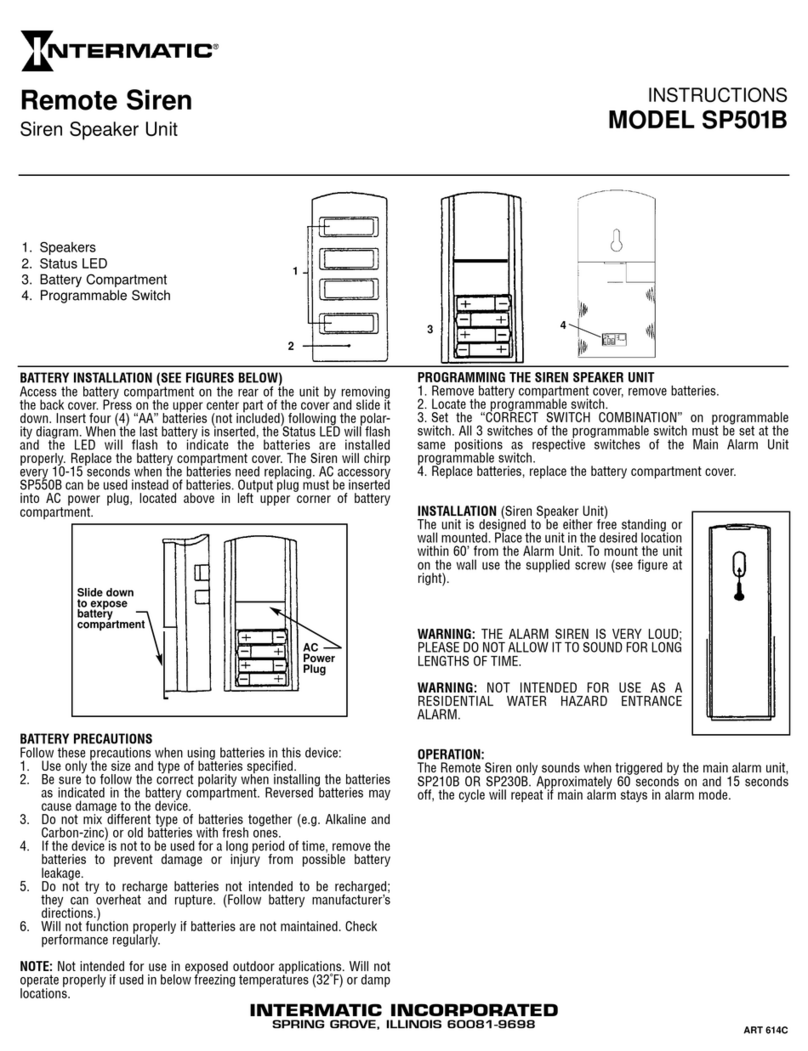
Intermatic
Intermatic SP501B instructions
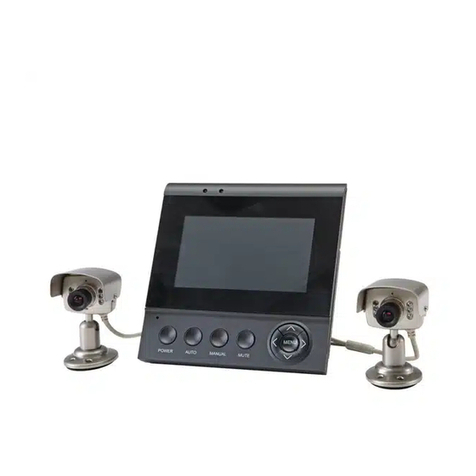
Bunker Hill Security
Bunker Hill Security 62284 Owner's manual & safety instructions
BeaconMedaes
BeaconMedaes MEGA 2 Installation, operation and maintenance instructions
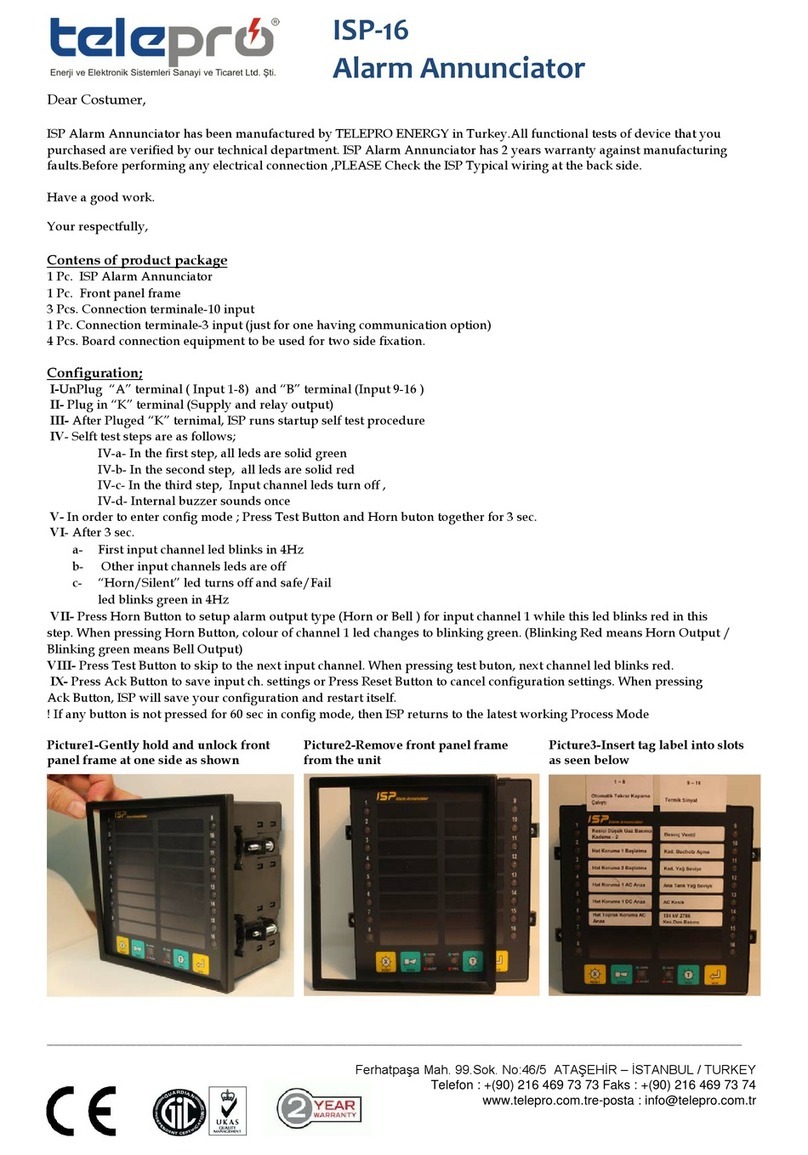
Telepro
Telepro ISP-16 Configuration
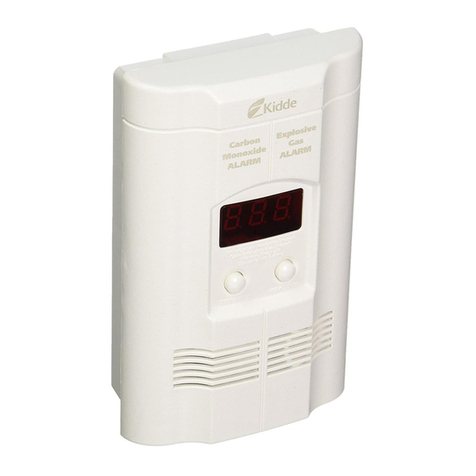
UTC Fire and Security
UTC Fire and Security Kidde KN-COEG-3 user guide




